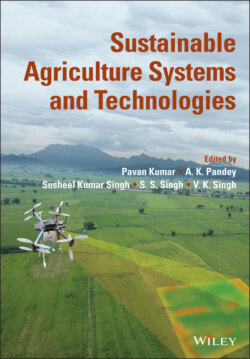Читать книгу Sustainable Agriculture Systems and Technologies - Группа авторов - Страница 53
4.1 Introduction
ОглавлениеWith the emergence of coronavirus disease (COVID‐19) as a public health emergency of international concern, India seems to be one of the top vulnerable countries. COVID‐19 is the seventh member of the coronavirus family and in the past six other types have already been reported. The genetic and genome structure of COVID‐19 is approximately 80% similar to that of the SARS virus detected in bats (Linton et al. 2020). The symptoms of its infection are almost identical to the seasonal flu where patients may have cold, cough, and fever. However, the actual detection is only possible after the clinical test (Kumar et al. 2021; Singh et al. 2021), which is another big challenge for a populated country like India, with limited testing facilities. Looking at the pace of its spread and the severity of the situation, the WHO on 23 January 2020, declared COVID‐19 outbreak as a public health emergency of international concern (Sohrabi et al. 2020; World Health Organization 2020). The earlier pandemic of Spanish flu in the year 1918 tolled 50 million deaths worldwide (Chatterjee et al. 2020) and remained active for more than the next two years until it was controlled (https://www.history.com/news/spanish‐flu‐second‐wave‐resurgence). Thus, it becomes essential to study the trajectories of infection, death, and recovery for the near future. This is expected to assist policymakers in formulating plans and adopt adequate measures to control any further damage caused by the COVID‐19 (Raghunathan et al. 2019).
